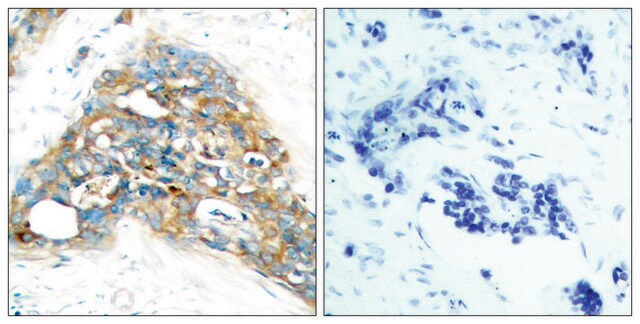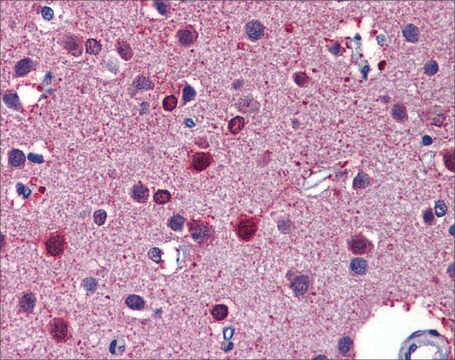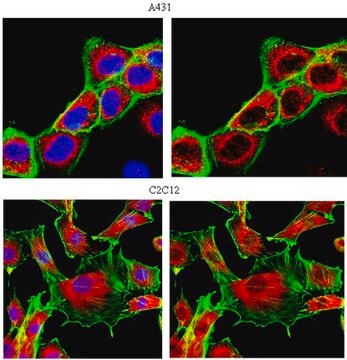SAB4502581
Anti-Retinoic Acid Receptor β, C-Terminal antibody produced in rabbit
affinity isolated antibody
Synonym(e):
HBV-activated protein, RAR-β, RAR-ε, nuclear receptor 1B2, retinoic acid receptor β
About This Item
Empfohlene Produkte
Biologische Quelle
rabbit
Konjugat
unconjugated
Antikörperform
affinity isolated antibody
Antikörper-Produkttyp
primary antibodies
Klon
polyclonal
Form
buffered aqueous solution
Mol-Gew.
antigen 50 kDa
Speziesreaktivität
mouse, human
Konzentration
~1 mg/mL
Methode(n)
ELISA: 1:20000
immunohistochemistry: 1:50-1:100
western blot: 1:500-1:1000
NCBI-Hinterlegungsnummer
UniProt-Hinterlegungsnummer
Versandbedingung
wet ice
Lagertemp.
−20°C
Posttranslationale Modifikation Target
unmodified
Angaben zum Gen
human ... RARB(5915)
Verwandte Kategorien
Allgemeine Beschreibung
Immunogen
Immunogen Range: 331-380
Biochem./physiol. Wirkung
Mutation in the gene is associated with the development of anophthalmia and/or microphthalmia and diaphragmatic hernia. RARβ gene inactivation caused by RARβ methylation contributes to the pathogenesis of non-small cell lung cancer (NSCLC) and acts as a potential biomarker, risk factor and therapeutic target for NSLC.
Leistungsmerkmale und Vorteile
Physikalische Form
Haftungsausschluss
Sie haben nicht das passende Produkt gefunden?
Probieren Sie unser Produkt-Auswahlhilfe. aus.
Lagerklassenschlüssel
10 - Combustible liquids
WGK
nwg
Flammpunkt (°F)
Not applicable
Flammpunkt (°C)
Not applicable
Hier finden Sie alle aktuellen Versionen:
Analysenzertifikate (COA)
Die passende Version wird nicht angezeigt?
Wenn Sie eine bestimmte Version benötigen, können Sie anhand der Lot- oder Chargennummer nach einem spezifischen Zertifikat suchen.
Besitzen Sie dieses Produkt bereits?
In der Dokumentenbibliothek finden Sie die Dokumentation zu den Produkten, die Sie kürzlich erworben haben.
Unser Team von Wissenschaftlern verfügt über Erfahrung in allen Forschungsbereichen einschließlich Life Science, Materialwissenschaften, chemischer Synthese, Chromatographie, Analytik und vielen mehr..
Setzen Sie sich mit dem technischen Dienst in Verbindung.








